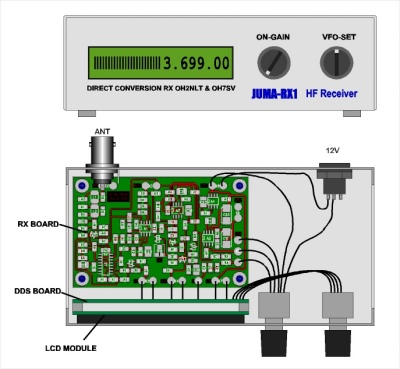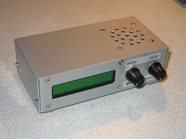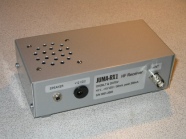The
building blocks of the receiver
There are two printed-circuit
boards in the receiver, the RX-main board and the DDS-control board. The
display is a ready-made LCD-module (Figure 3).
The RX-main board contains
the mixer, necessary amplifiers, SSB-filter, AGC, and voltage regulation.
The RX-main board provides the DDS board with S-meter voltage and 12 V
supply voltage. Local oscillator signal is generated by the DDS board.
The DDS board incorporates
a digital local oscillator driven by an on-board microcontroller. Frequency
is adjusted by a rotary encoder read by the micro-controller which then
sets the DDS frequency. In addition, the on-board microcontroller drives
the LCD display indicating frequency and bar-type S-meter readings or supply
voltage. The microcontroller also generates acknowledgement audio tones.
|
|

Figure 3. JUMA-RX1 construction |


